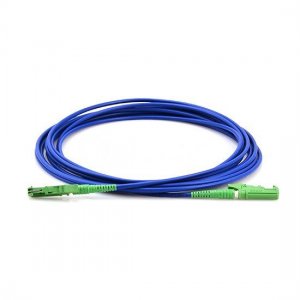Fiber Optic Patch Cable: Essential Connectivity Solution for High-Speed Networks

# Fiber Optic Patch Cable: Essential Connectivity Solution for High-Speed Networks
Keyword: Fiber Patch Cable
What is a Fiber Patch Cable?
A fiber optic patch cable, commonly referred to as a fiber patch cord or jumper, is a crucial component in modern networking systems. These cables consist of one or more optical fibers enclosed in protective jackets with connectors on both ends, designed to provide temporary or permanent connections between optical devices.
Key Features of Fiber Patch Cables
Fiber patch cables offer several distinct advantages that make them indispensable in high-speed network environments:
- High bandwidth capacity for data transmission
- Low signal attenuation over long distances
- Immunity to electromagnetic interference
- Lightweight and flexible design
- Secure data transmission (difficult to tap)
Types of Fiber Optic Patch Cables
There are several variations of fiber patch cables available to meet different networking requirements:
Single-mode vs. Multimode
Single-mode fiber patch cables (SMF) use a smaller core diameter (8-10 microns) and are designed for long-distance communication. Multimode fiber patch cables (MMF) have a larger core (50 or 62.5 microns) and are typically used for shorter distances within buildings or campuses.
Common Connector Types
Fiber patch cables come with various connector types to suit different equipment interfaces:
- LC (Lucent Connector) – small form factor
- SC (Subscriber Connector) – push-pull design
- ST (Straight Tip) – bayonet-style coupling
- FC (Ferrule Connector) – screw-on connection
Applications of Fiber Patch Cables
Fiber optic patch cables find applications across numerous industries and network environments:
- Data center interconnections
- Telecommunication networks
- CATV and broadband networks
- Medical imaging systems
- Military and aerospace communications
- Industrial automation systems
Choosing the Right Fiber Patch Cable
When selecting a fiber patch cable for your network, consider these factors:
- Transmission distance – Single-mode for long distances, multimode for short
- Bandwidth requirements – Higher bandwidth needs may require OM4 or OS2 cables
- Environment – Indoor, outdoor, or harsh conditions may require special jackets
- Connector compatibility – Match connectors to your equipment interfaces
- Bend radius – Consider bend-insensitive fibers for tight spaces
Maintenance and Handling Tips
Proper care of fiber patch cables ensures optimal performance and longevity:
- Always use protective caps when cables are not in use
- Clean connectors regularly with approved fiber optic cleaning tools
- Avoid excessive bending beyond the specified minimum bend radius
- Store cables properly when not in use to prevent damage
- Inspect connectors for damage before installation
The Future of Fiber Patch Cables
As network speeds continue to increase and data demands grow exponentially, fiber optic patch cables will remain at the forefront of connectivity solutions. Emerging technologies like 400G and 800G Ethernet will drive the development of even
You May Also Like

AI Meets Couture: How Artificial Intelligence is Redefining the Future of Fashion
February 28, 2025
Sprunki: Unveiling the Mysteries of a Hidden World
March 20, 2025